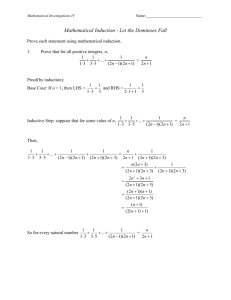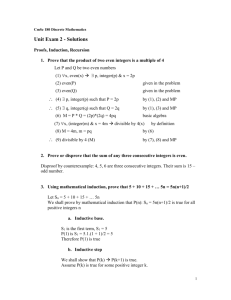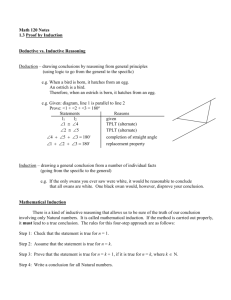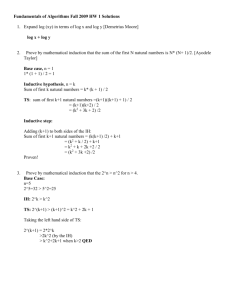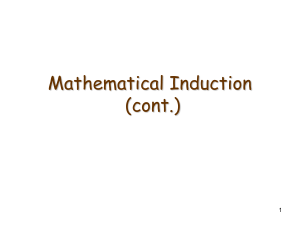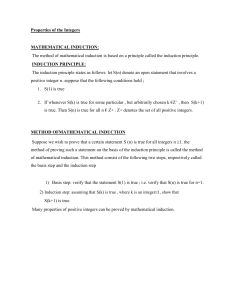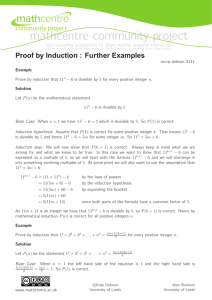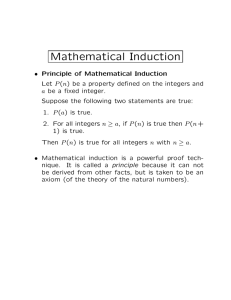Mathematical Investigations IV
advertisement
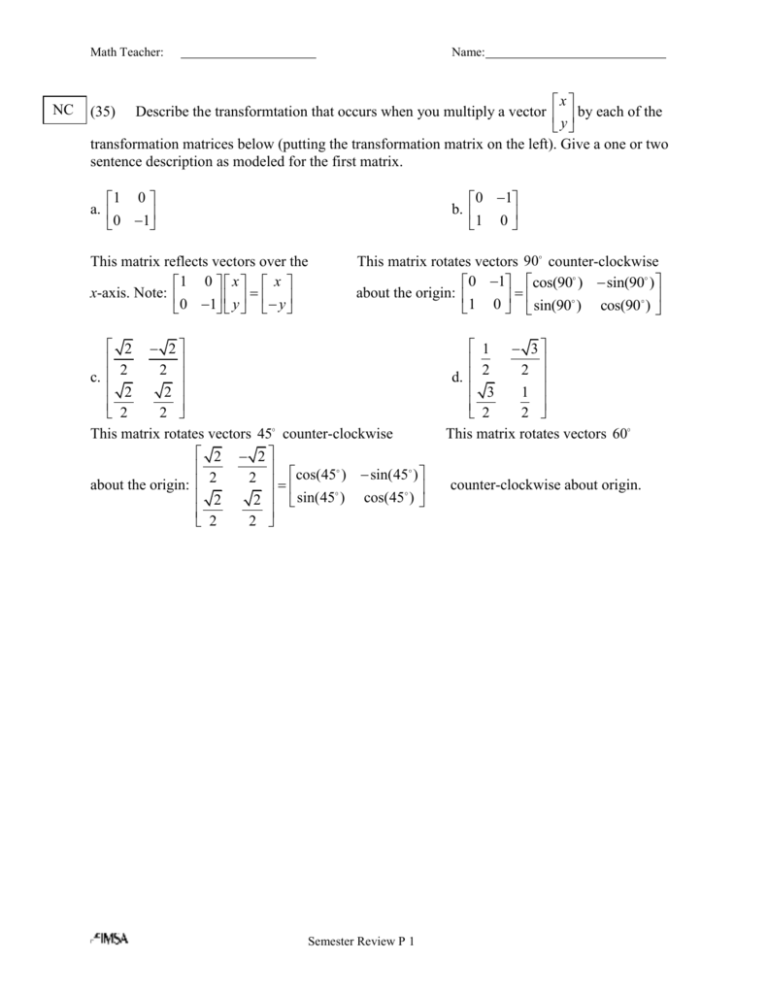
Math Teacher: NC Name: x Describe the transformtation that occurs when you multiply a vector by each of the y transformation matrices below (putting the transformation matrix on the left). Give a one or two sentence description as modeled for the first matrix. (35) 0 1 b. 1 0 1 0 a. 0 1 This matrix reflects vectors over the 1 0 x x x-axis. Note: 0 1 y y This matrix rotates vectors 90 counter-clockwise 0 1 cos(90 ) sin(90 ) about the origin: 1 0 sin(90 ) cos(90 ) 2 2 2 c. 2 2 2 2 2 This matrix rotates vectors 45 counter-clockwise 2 2 2 2 cos(45 ) sin(45 ) about the origin: 2 2 sin(45 ) cos(45 ) 2 2 Semester Review P 1 1 3 2 d. 2 3 1 2 2 This matrix rotates vectors 60 counter-clockwise about origin. Math Teacher: NC Name: (36) Prove the following statements using the Princiople of Mathematical Induction: I. For all positive integers n, 3 11 19 Proof (by induction): Base case (n = 1): LHS (8 1 5) 3 RHS 4 12 1 3 (8n 5) 4n2 n , so the equality holds when n = 1. Inductive step: Suppose that for some positive integer k, 3 11 19 (8k 5) 4k 2 k . Then, 3 11 19 (8k 5) (8(k 1) 5) 4k 2 k (8(k 1) 5) , by the inductive hypothesis 4k 2 7 k 3 4(k 2 2k 1) (k 1) 4(k 1) 2 (k 1) Hence, by Mathematical Induction 3 11 19 integers n. (8n 5) 4n2 n holds for all positive Semester Review P 2 Math Teacher: Name: II. For all positive integers n, 11! 2 2! 3 3! ........... n n! ( n 1)! 1 Proof (by induction): Base case (n = 1): LHS 11! 1 , so the equality holds when n = 1. RHS (1 1)! 1 1 Inductive step: Suppose that for some positive integer k, 11! 2 2! 3 3! ........... k k ! (k 1)! 1 . Then, 11! 2 2! 3 3! ........... k k ! (k 1)(k 1)! (k 1)! 1 ( k 1)( k 1)! , by the inductive hypothesis (k 1)! (k 1)(k 1)! 1 (k 1)!1 (k 1) 1 (k 1)! k 2 1 (k 2)! 1 Hence, by Mathematical Induction 11! 2 2! 3 3! ........... n n! ( n 1)! 1 holds for all positive integers n. Semester Review P 3 Math Teacher: III. Name: For all integers n 0, n3 5n 6 is divisible by 3. Proof (by induction): Base case (n = 0): For n = 0, n3 5n 6 6 which is clearly divisible by 3. Therefore, the base case holds. Inductive step: Suppose that for some positive integer k, k 3 5k 6 is divisible by 3. Then there is a positive integer p such that 3 p k 3 5k 6 Then, (k 1)3 5(k 1) 6 k 3 3k 2 3k 1 5k 5 6, remember Pascal's triangle? = k 3 5k 6 3k 2 3k 6 =3 p 3(k 2 k 2) = 3( p k 2 k 2) This last expression is clearly a multiple of 3. Hence, by Mathematical Induction n3 5n 6 is a multiple of (divisible by) 3 for all n 0. Semester Review P 4
